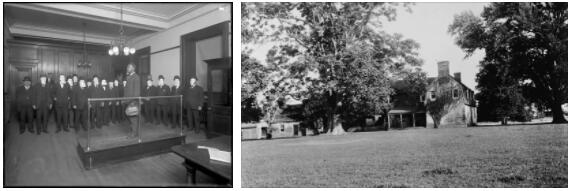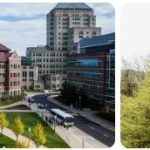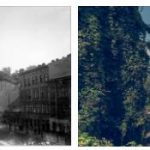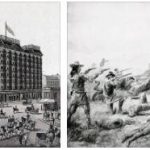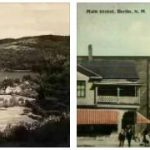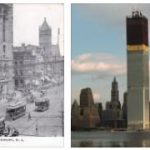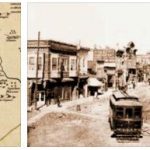Population: 5 828.289 thousand people (2011)
Area: 32133.0 sq. km
Maryland is a small state located in the eastern United States. It is believed that already about 12,000 years ago these lands were inhabited by people whose main occupations were hunting and fishing. By the time of the European colonization of America, the Algonquian peoples of the Nantikouk lived on the east coast of the Chesapeake Bay, in the west – the Shawnee, and in the area of Baltimore and Washington – the Piscataway.
In 1524, a French expedition led by Giovanni da Verrazano visited the east coast of North America, and 2 years later the Spaniards arrived in the Chesapeake Bay. The British appeared in this area only in 1608, when Captain John Smith from Virginia visited here, and already in 1631, William Clairborne founded the first trading settlement on this place.
In 1632, a patent for the settlement of the future province of Maryland was granted by Charles I to the Irish Baron Baltimore – George Calvert. However, the baron dies in the same year, and the territory passes into the possession of his son, Kelicius Calvert. At the end of March 1634, the British founded the settlement of St. Mary here, named after Henrietta Maria, the queen’s heavenly patroness.
In 1649, the Maryland Toleration Act was passed in the colony, which proclaimed freedom of religion. From 1692-1715, the government of Maryland was concentrated in the hands of the royal governors, and in 1694 Providence became the provincial capital, later renamed Annapolis.
In the first quarter of the 18th century, in order to avoid disagreements between Pennsylvania and Maryland, a border was drawn between the colonies – the Mason-Dixon Line, which is the actual border between the south and north of the United States. In 1776, Maryland adopted its own constitution, and 12 years later, Maryland became a US state. In 1791, land was allocated for the creation of the metropolitan District of Columbia and the founding of the city of Washington.
Tourism has been actively developing in the state since the 80s of the XX century. The main attention of tourists is attracted by the Ocean City resort and Baltimore attractions, the main of which are the Inner Harbor and the National Aquarium.
BALTIMORE
Time zone: UTC-5, summer UTC-4
The city of Baltimore is located in northeastern Maryland, where the Patapsco River flows into the Chesapeake Bay. The division of the city into “upper” and “lower” is literally: part of the Baltimore territories is located on the Piedmont Plateau at an altitude of 150 meters, and the other part is on the Atlantic Plain at sea level.
The history of these places dates back to the 18th century. A small settlement, thanks to its favorable location for the port, in 1729 received the status of a city. The successful start of Baltimore’s development did not insulate it from the problems that arose later. Today, the city has a fairly low standard of living by American standards. About a quarter of those living here are below the poverty line. Many people have fled their homes in the last few decades. The remaining population is predominantly black. Most of them have only secondary education.
The reasons for the decline lie in the decline in the importance of shipping. The result of this was the reduction of jobs in the steel industry, shipbuilding plants. It is precisely those areas that, until the end of the 20th century, were the basis of the economy of Baltimore
Economic and social problems affected the appearance of the city. The western and eastern regions are notorious for high crime rates. With its abandoned houses with boarded up windows, garbage on the streets, Baltimore is more like some city in Eastern Europe during the period of perestroika, and not at all a modern American metropolis.
This contrast becomes more noticeable if, immediately after walking through disadvantaged places, you get to the tourist center of the city: Baltimore’s Inner Harbor. A wonderful view of the bay with ships, modern buildings around the bay, a motley crowd of tourists – all this looks like a window into another world.
In addition to popular attractions such as the National Aquarium; baseball stadium Oriole Par; Basilica of Baltimore (Baltimore Basilica); the Washington Monument, Baltimore has the Edgar Allan Poe Museum. The whole life of a talented American writer is connected with this city. Visiting the house where the author of blood-chilling stories lived, it becomes clearer where Poe drew the gloom of his stories.
To immerse yourself in the local life full of contrasts, you need to visit the Lexington Market and taste the best crabcakes in the city – a local delicacy made from blue crab meat, which are found only here.
Going to Baltimore, you can safely count on vivid impressions. Although its inhabitants are striving to move on to new lines of development, this place still retains the unforgettable charm of a port city.
Frederick, Maryland
Frederick, Maryland, a city in the central part of the state, boasts a rich history dating back to its founding in the early 18th century. With a legacy deeply tied to events like the American Revolution and the Civil War, Frederick has evolved into a vibrant community that values its historic character. The city’s climate, influenced by its location in the northeastern United States, adds to the charm of this historic locale.
The history of Frederick begins in 1745 when it was founded as a crossroads community by German and English settlers. Originally known as Frederick Town, the city served as a key hub for trade and commerce, owing to its strategic location at the intersection of major roads. The city’s name pays homage to Frederick Calvert, the sixth and final Lord Baltimore, the colonial proprietor of Maryland.
Frederick played a significant role in the American Revolution. It served as a key supply depot for the Continental Army, and prominent figures such as George Washington and Marquis de Lafayette passed through the city. The Barbara Fritchie House, associated with a legendary incident during the Civil War, is another historical landmark that attracts visitors interested in Frederick’s role in shaping the nation.
During the Civil War, Frederick found itself at the crossroads of conflicting forces. The city experienced both Union and Confederate occupations, and the Battle of Monocacy, fought in 1864, took place just south of Frederick. The National Museum of Civil War Medicine in the city provides insights into the medical aspects of this tumultuous period in American history.
According to Petwithsupplies, Frederick’s climate is characterized by four distinct seasons, typical of the northeastern United States. Summers are warm, with average high temperatures ranging from the mid-80s to low 90s Fahrenheit (29-35°C). Winters are cold, with average high temperatures in the 30s and 40s Fahrenheit (-1 to 7°C). The city experiences moderate precipitation throughout the year, with occasional snowfall in the winter months.
The changing seasons contribute to the variety of outdoor activities enjoyed by Frederick residents. The city is surrounded by scenic landscapes, including the Appalachian Mountains to the west and the Monocacy River running through the area. Parks such as Baker Park offer opportunities for hiking, picnicking, and outdoor events.
Frederick’s commitment to historic preservation is evident in its well-preserved downtown area, featuring a mix of 18th and 19th-century architecture. Carroll Creek Park, with its linear water feature and walking paths, adds to the charm of the historic district. The city’s vibrant arts scene is showcased in events like the Frederick Festival of the Arts, celebrating visual and performing arts.
Education is a focal point in Frederick, with institutions like Hood College contributing to the city’s cultural and intellectual vibrancy. The city’s downtown area hosts events like “First Saturday,” where local businesses and galleries open their doors to the community.
In recent years, Frederick has experienced growth and economic development. The city has attracted businesses in various sectors, including biotechnology and healthcare. The presence of the Frederick Municipal Airport and proximity to major metropolitan areas, including Washington, D.C., has further contributed to the city’s accessibility and economic vitality.
The Weinberg Center for the Arts, a historic theater in downtown Frederick, hosts a range of performances, from live music to theatrical productions, contributing to the city’s cultural offerings. The community also comes together for events like the Great Frederick Fair, an annual agricultural fair dating back to the 19th century.
Frederick, Maryland, stands as a city with a rich history that spans centuries, from its colonial roots to its role in pivotal events like the American Revolution and the Civil War. Today, Frederick’s historic charm, cultural vibrancy, and commitment to education and preservation make it a unique and appealing destination in the northeastern United States. The city’s climate, marked by distinct seasons, adds to the allure of this historic and dynamic community.
